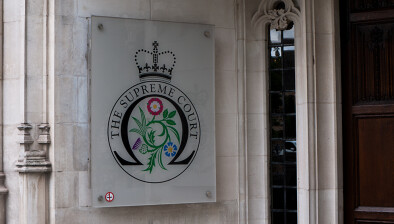Council ordered to re-consider planning application for Cumbernauld retail park expansion
The owners of a shopping centre in Cumbernauld have succeeded in a petition for judicial review made against a decision of North Lanarkshire Council to grant planning permission for a major development near Cumbernauld Town Centre.
Bridges Antonine LLP argued that the council had erred in their consideration of the application by not assessing the proposals correctly and according to the authority’s Strategic Development Plan.
The petition was heard in the Outer House of the Court of Session by Lord Burns.
Protect and enhance
On 14 June 2019, the respondent granted an application for planning permission for a major development on an 18.7 hectare site about 1.8 miles from Cumbernauld Town Centre. The proposed development included retail, hospitality, commercial, and leisure facilities, as well as food and drink outlets. The site was also home to other retail units, for which there were extant permissions for further development.
The authority’s current Strategic Development Plan identified a network of strategic centres, including Cumbernauld Town Centre. These were to become “vibrant centres for living, culture entertainment, leisure, shopping, business and civic activity”. It also stated that all strategic developments within the network should protect and enhance the development of the network of strategic centres, and that these network locations should be preferred locations for developments subject to impact assessments to ensure there was no detrimental impact to other nearby network locations.
There was no dispute that the proposals could not be accommodated in Cumbernauld Town Centre and no other sites were preferable to the proposed location. The council carried out a Retail Impact Assessment in respect of the convenience aspects of the development only on Cumbernauld Town Centre, estimating it would draw four per cent of footfall from the area. This was considered acceptable by the council.
The petitioners submitted that the SDP had been misapplied by the council. The SDP required assessment of the proposals in order to discover whether they protected and enhanced the development of the network of strategic centres in line with their role and function, challenges and future actions. It also required assessment of the impact on the network to ensure no detrimental impact. Neither of these had been carried out.
The second ground of challenge was that the respondents had used the extant permissions at the site as a fall-back position in order to justify the granting of this application. However, they had failed to have regard to the fact that the extant permissions had no real prospects of being implemented to any greater extent than that which was already built.
It was also submitted that the decision was unreasonable as there was not adequate evidence of the impact on Cumbernauld Town Centre, and that the granting of consent was premature. The petitioners had previously written to the council objecting to the decision, and they intended to make representations during the next consultation period to the effect that the Local Plan ought to protect the existing town centres.
Materially flawed
In his written opinion, Lord Burns began by addressing the definition of the term “protect and enhance”, saying: “[T]he phrase ‘protect and enhance’ cannot be read literally since few, if any, proposals would be capable of achieving such a high standard. It would be enough to show that a proposal would not do significant harm to the development of town centres in line with its retail role and function.”
Addressing the manner in which the council had assessed the proposals, he said: “When assessment of impact of a particular proposal is required by the Development Plan, there are, no doubt, a number of different ways in which that assessment can legitimately be carried out by a Planning Authority in the exercise of its judgement. As long as the method used is capable of properly assessing the impact of the proposal before it, in accordance with the relevant policy, the court cannot interfere in a judicial review.”
He continued: “The respondents did consider the issue of assessment of impact in the way I have set out. They did so in the context of the relevant policies which were identified in the Report. But I do not consider that they did so in a way which conformed to the two relevant requirements of [the relevant policy] in the SDP. In using the extant permissions as a way to assess impact as required by that Policy, they erred in a material way.”
Addressing the report given to the authority, he said: “[T]he Report to Committee, which the committee accepted and adopted, was materially flawed. It found that the application complied with the Development Plan on an erroneous basis. That renders the resolution and the decision which followed its reasoning unlawful. Had the deficiencies in the method of assessment of impact which was used been identified, the decision might have been different. I therefore find that the petitioner is correct in contending that the respondents failed properly to interpret and apply the key policies in the Development Plan.”
Regarding the petitioners’ other submissions, he said: “I do not accept that the respondents erred in applying a fall-back position to this application. The extant permissions were not used as a justification to grant the permission sought on the basis that the extant permissions would create greater harm to Cumbernauld Town Centre. They were used instead as a means to predict the likely impact and effect of the application if granted. However the agreed position that the unbuilt portion of the extant permissions would not materialise was a relevant consideration in the usefulness of the extant permissions as a means of assessment.”
He continued: “I do accept, however, that the reasons advanced by the respondents for the grant of permission were perverse and inadequate. It is perverse to use as a justification for granting permission a method of assessment which is incapable of meeting the requirements of the relevant policies. To do so is also to give inadequate reasons.”
He concluded: “I find that the respondents failed to fulfil their statutory duties under the [Town and Country Planning (Scotland) Act 1997]; that they erred in law; that they failed to give proper reasons; and that they acted unreasonably. Although both the respondents and the interested party have a plea in law to the effect that I should not reduce the decision even if I find in favour of the petitioners, I decline to do so. There are no exceptional circumstances here which would justify exercising my discretion in such away. The decision is materially flawed and the petitioners are prejudiced thereby. The respondents should re-examine the application in the light of this opinion.”








